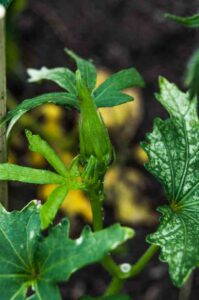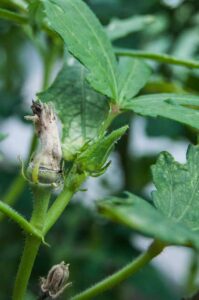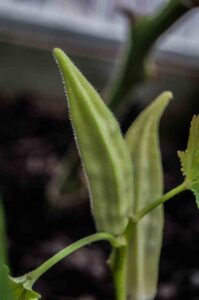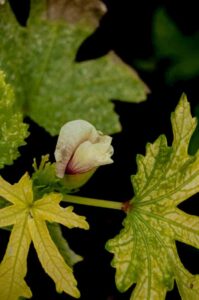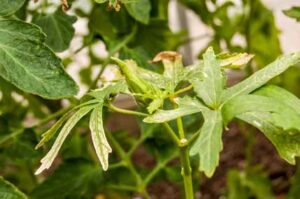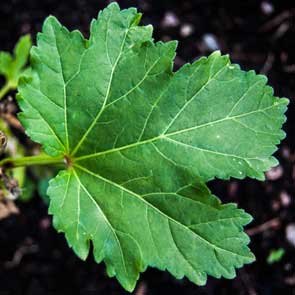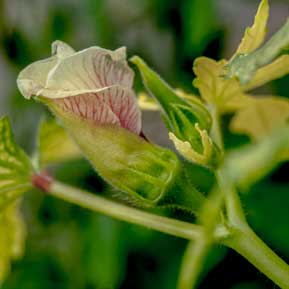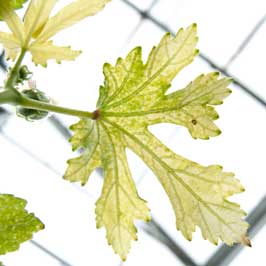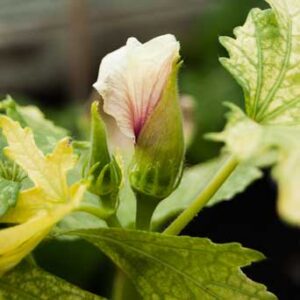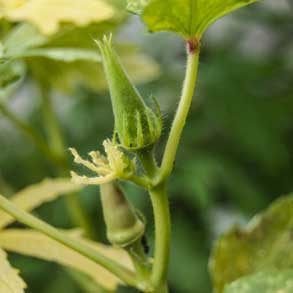![]()
- Abelmoschus esculentus, commonly known as okra or lady’s finger, is a flowering plant belonging to the mallow family (Malvaceae). This important vegetable crop has been cultivated for centuries and holds significant cultural, economic, and nutritional value across many regions of the world.
- The plant is characterized by its upright growth habit, typically reaching heights of 1-2 meters. It features large, palmate leaves with distinct lobes and produces showy flowers that resemble those of hibiscus, with five pale yellow petals and a dark center. The flowers are self-pollinating but can also be cross-pollinated by insects.
- A. esculentus produces distinctive elongated pods (fruits) that are harvested while immature. These pods contain numerous seeds arranged in vertical rows and are characterized by their unique mucilaginous texture. The pods vary in size, shape, and color depending on the cultivar, ranging from light to dark green, and sometimes featuring ridges or a smooth surface.
- The plant demonstrates remarkable adaptability to various climatic conditions, though it thrives best in warm, humid environments. It is relatively drought-tolerant and can grow in different soil types, making it an important crop in regions with limited agricultural resources.
- Nutritionally, okra is a valuable source of dietary fiber, vitamins (particularly vitamin C, K, and folate), minerals (including calcium, potassium, and magnesium), and antioxidants. The mucilage contains unique polysaccharides and proteins that contribute to its dietary and potential medicinal properties.
- The crop has significant cultural importance in many cuisines worldwide, particularly in South Asian, Middle Eastern, African, and Southern United States cooking. Its versatility in cooking methods and ability to act as a thickening agent in soups and stews adds to its culinary value.
- Research has revealed numerous potential health benefits associated with okra consumption. Studies have investigated its role in managing diabetes, reducing cardiovascular risks, and supporting digestive health. The high fiber content and bioactive compounds contribute to these potential benefits.
- The plant’s cultivation requirements include well-drained soil, adequate sunlight, and regular moisture. It is generally considered an easy-to-grow crop, though it can be susceptible to certain pests and diseases. Proper spacing and timing of harvest are crucial for optimal yield.
- A. esculentus has shown promise in sustainable agriculture practices. Its relatively short growing season, efficient water use, and ability to improve soil structure through its root system make it valuable in crop rotation and small-scale farming systems.
- The species exhibits genetic diversity that has been utilized in breeding programs to develop varieties with improved yield, disease resistance, and quality characteristics. This genetic variation also provides resources for adaptation to changing environmental conditions.
- Post-harvest handling of okra requires careful attention due to its perishable nature. The pods can quickly become tough and fibrous if not harvested at the right stage or properly stored. Research continues to improve storage and preservation methods.
- Beyond its food value, okra has potential industrial applications. The mucilage has been studied for use in various industries, including as a natural thickener, emulsifier, and even in water treatment processes.
- Traditional medicine systems have long utilized various parts of the okra plant. The seeds, leaves, and immature pods have been used in treating different ailments. Modern research continues to investigate these traditional uses and identify active compounds.
- The plant plays a role in agricultural biodiversity and can contribute to ecological services. Its flowers attract pollinators, and the plant can serve as a companion crop in certain growing systems.
- Recent research has focused on understanding the biochemical composition of okra and its potential applications in functional foods and nutraceuticals. The presence of unique compounds and antioxidants continues to attract scientific interest.
- Conservation efforts are important for maintaining genetic diversity within A. esculentus and its wild relatives. This diversity is crucial for future breeding programs and adaptation to changing environmental conditions.
